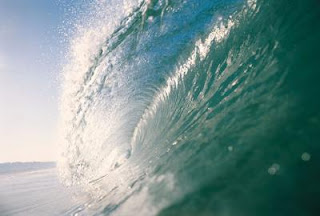
Some might think that going green is all about tree hugging. Dionysius of WWF begs to differ.
IF you expect Datuk Dr Dionysius Sharma, executive director/CEO of WWF-Malaysia to be a tree hugging hippy (though the little ponytail might be a little deceiving), you can forget it.
Affectionately know as Dino to his colleagues, friends and family, Dino’s wide friendly smile can convince anyone to start recycling.
Having grown up in a small kampung, Dino speaks about his childhood days fondly.
“The jungle was right behind my house and I used to go into the jungle to catch spiders, snakes, fishes and play with the monkeys. My exposure to the great outdoors happened from when I was really young and I grew up knowing what I want to do in life,” he says.
Pursuing a degree in Ecology was the most logical choice for Dino. After finishing his course, he went on to study his masters in Mycology.
“Mycology is the study of fungi,” he explains. “I was also working as a research assistant for a professor at that time. I wanted to get paid and study at the same time and that was obviously the best option for me,” he adds.
Unfortunately (or on hindsight, fortunately), his job did not last long. “In 1990, I saw an ad in the papers for a vacancy in WWF to come on board as a botanist. I was more interested in animals but I thought I should put one leg in first. So I applied for it and got the interview and during the interview I had to tell them that I wasn’t interested at all to work with plants. Of course I did not get the job,” he chuckles.
The Natural Choice
But as luck would have it, Dino got a call from them a few days later asking if he would like to join the WWF team for a project on leatherback turtles.
“It was my first assignment and we were sent to Terengganu to work on leatherback turtle conservations. We were reporting on what’s been happening to the leatherback turtles and why they are on the decline and also some issues with coastal development.
“We also ran a small model turtle sanctuary to show the locals how they can conserve the turtles and at the same time still handle tourists. We also educated them on the importance of releasing the hatchlings and the repercussions of consuming turtle eggs,” he says.
“I think I made the right choice when I left my job as a research assistant and joined the WWF. It seemed like it was a natural choice,” he muses.
“My next project was to map out limestone caves that used to be tin mines. Working together with the MNS (Malaysian Nature Society), we mapped out the caves and these are probably one of the most historically important caves in the country. This is not even about studying the bats and guano any more. It is about understanding the history of the caves,” he says.
Compared to what he was doing 18 years back, the type of conservation has also changed.
“Back then, it was more of going out there to identify spaces that should be put aside to save the animals. Nowadays, we are all fighting for land. For agriculture, for the different species of animals, flora and fauna or even for timber and minerals.
“There is always a competition for land as population increases,” Dino says.
“Our job is to find a way to communicate with the government, the people and to send them a message that they will understand,” he adds.
Doing Our Part
“WWF’s mission is to ensure we live in harmony with the environment. As we develop this planet to our benefit and needs, we should not compromise the environment, be it plants or animals,” Dino says.
“Globally, the WWF is more interested on the impact companies have on the environment. Like for example, Coca-Cola is a water-intensive industry. We are now working with them on water conservation projects. This way they get to co-brand with us and at the same time they also truly appreciate the way they consume water,” he says.
Instead of wondering what the government or big companies are doing for the environment, why not start from yourself?
“I try not to drive as much as I can. I only drive when the place is impossible to get to using public transport,” says Dino.
“I usually take the train to town and I catch up on work during the commute so you’ll probably see me sending text messages or reading through documents in the train. We can actually spend the time wisely if we plan ahead, you’ll appreciate the time spent in the train instead of being stuck in a jam in your car.
“The big difference between the train commuters here and in England, everyone’s reading a book or the newspapers. But here, most of the commuters are sleeping or staring at other people,” he says.
“It all starts from your home so I try to educate my own family the importance of recycling. All plastic, glass and paper will be separated, all vegetable and peel goes into a compost bin. My children were educated from young,” he says.
“I think the public is generally well informed about issues at hand like global warming and climate change. But what worries me is what are we doing about it?
What is the value of having watch The Inconvenient Truth when in actual fact people still carry on with their unsustainable lifestyle? You cannot be aware of the issues and not do anything about it. What really matters most is individual action,” Dino stresses.
“It is so easy to point the finger and say the government is not doing enough or who has yet to sign the Kyoto Protocol but stop and take a look at yourself. Have you made the decision to take public transport to reduce carbon dioxide emission?” he questioned.
Generation Next
“When my first child was born, the phrase ‘leaving this planet for the next generation’ took a whole new meaning. I wonder what will happen to them in the future, what they can get out of this world and will they look back and say ‘Hey, why didn’t you do anything to prevent this from happening?
“Will they blame us for the state of the world that they might be living in the future? Will they look back and say why did we make such fundamental mistakes?” he says.
“My kids really rocked my world and strengthened my resolve to work even harder to conserve the environment. Do you really want the future generation to suffer? The world has so much to give us and I often wonder why do we take more than we need?”
Agreeing that conservation should be instilled from young, Dino notes that the formative years are the most crucial.
Children growing up in this developed society do not have enough exposure to nature. They might watch it on a documentary or via the Internet but they don’t get to touch, smell or hear it.
Children who are exposed to animals from a young age will also be more loving and caring.
“They should have the opportunity to see a stream or river, feel the waves in the ocean and see the leatherback turtles and coral reefs in its natural habitat. It will heighten their sense of knowing what nature is all about. To quote an old saying, when you want to bend a bamboo, you have to start from the shoots,” he says.
Reducing your carbon footprint
Knowing what ‘carbon footprint’ means doesn’t mean you’re doing anything for the environment. Here are some ways to baby steps towards a better tomorrow.
No to plastic Bring a cloth bag for shopping trips. This will help reduce the use of plastic bags. Also say no to plastic bags when you purchase only one item.
Recycle Not only your newspaper; recycle plastic, glass and tin cans. If your housing area doesn’t provide recycling facilities, just separate the trash and it will make it easier for the garbage collector to separate your garbage.
Car-pool Or ride a bike on the weekends for that short trip to the stores or the gym.
Plant a tree Instead of hanging out in shopping malls, why not opt to stay home and do some gardening instead? This way, you’ll save both ways!
From The Star.



















